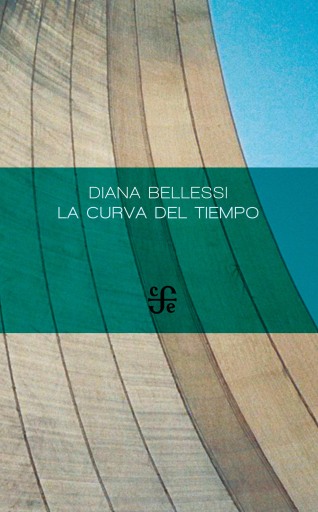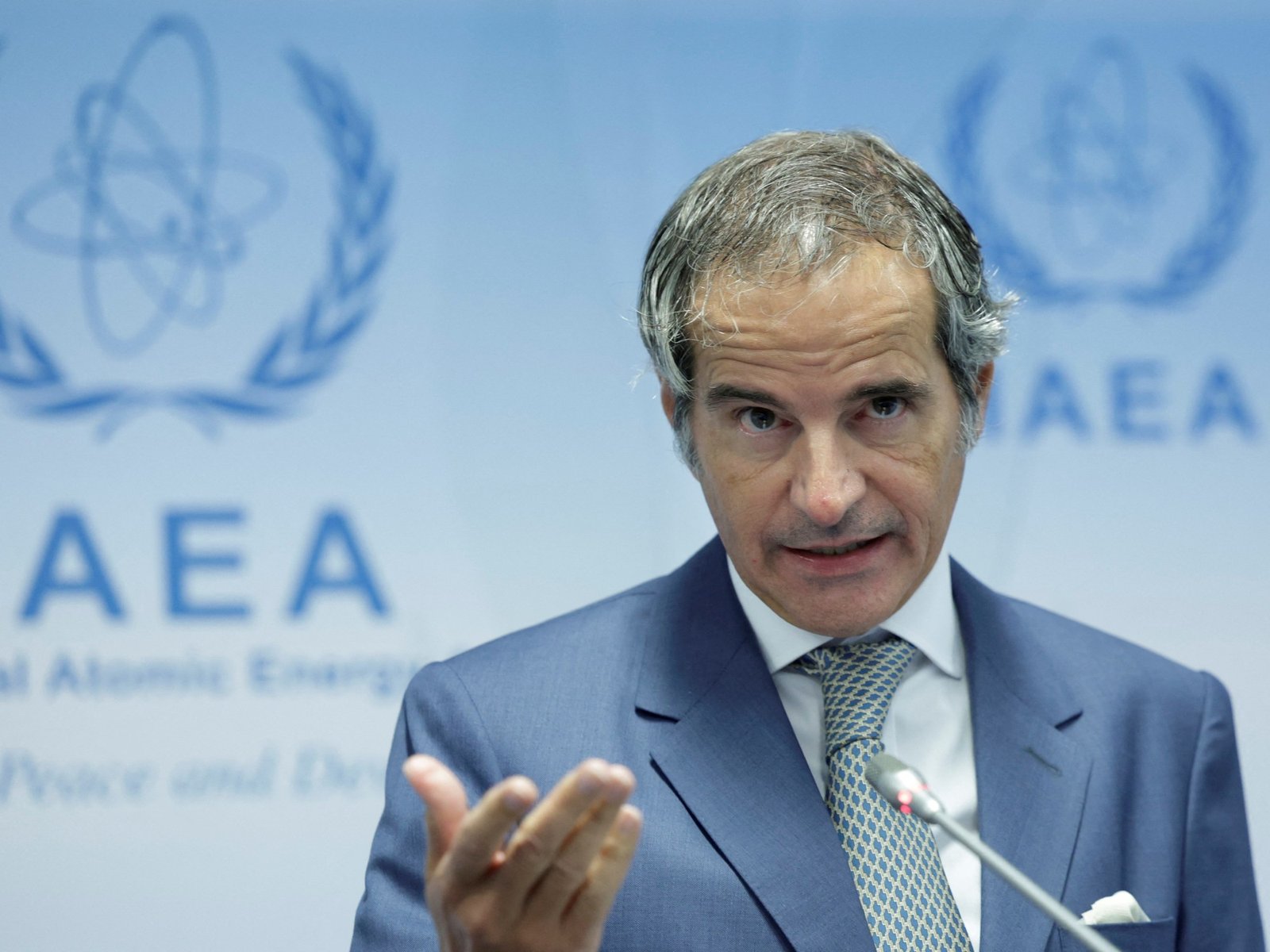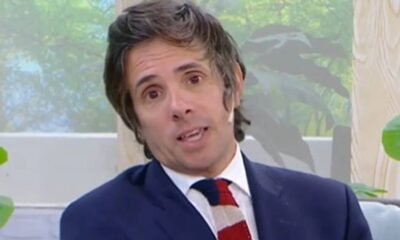INTERNACIONAL
Mark Zuckerberg on the stand: ‘Crazy,’ ‘scary’ ideas led him to buy Instagram and WhatsApp

It’s too bad there are no cameras allowed in federal courtrooms, because I really would like to see Mark Zuckerberg testify.
He was the leadoff witness in the Federal Trade Commission’s antitrust lawsuit against Meta, and that in itself was news.
The clash is the most sweeping attempt to dismember the world’s biggest social network, and goes to the heart of how competition is defined.
HAWLEY DEMANDS ZUCKERBERG TESTIFY ON ALLEGED TIES BETWEEN META, CHINA
Not since the government broke up AT&T more than four decades ago has a mega-corporation faced the prospect of being torn apart.
The suit was filed in the first Trump term (the president couldn’t stand Facebook at the time), aggressively pursued by Joe Biden, and now has finally come to trial in a Washington courtroom.
Trump once told me Facebook was such a threat to society that he used it as justification for flip-flopping on his effort to ban TikTok.
Meta CEO Mark Zuckerberg was the leadoff witness in the Federal Trade Commission’s antitrust lawsuit against his company. (Chris Unger/Zuffa LLC)
But since he won a second term, Zuck, like many tech bros, has been cozying up to the new sheriff in town, including a $1-million donation to the president’s inaugural.
There are reports that when the man who runs Facebook recently met with Trump, he asked about the possibility of dropping the lawsuit. Obviously, it didn’t work.
The focus of the trial is Zuckerberg’s decision to buy Instagram and WhatsApp when they were small start-ups.
FACT-CHECKING DIRECTOR WARNS OF ‘CRISIS’ AS META, TRUMP’S DOGE CUTS THREATEN THEIR ‘HONORABLE, PATRIOTIC’ WORK
The FTC’s lead lawyer questioned Zuckerberg about a platform meant to foster ties between family and friends to a concentration on showing users interesting third-party content through its news feed.
«It’s the case that over time, the ‘interest’ part of that has gotten built out more than the ‘friend’ part,» Zuckerberg said. He added that «the ‘friend’ part has gone down quite a bit, but it’s still something we care about.»
Translation: Screw the friends. Very 2010s. We’ve moved on.
Zuckerberg spoke slowly – at least according to reporters who were there – and he was back on the hot seat yesterday. FTC lawyers pressed him on a stack of emails he had sent:
«We really need to get our act together quickly on this since Instagram’s growing so fast.
«Instagram has become a large and viable competitor to us on mobile photos, which will increasingly be the future of photos.»
WHISTLEBLOWER TELLS SENATE COMMITTEE THAT META UNDERMINED US NATIONAL SECURITY TO COZY UP TO CHINA
«If Instagram continues to kick ass on photos, or if Google buys them, then over the next few years they could easily add pieces of their service that copy what we’re doing now.» Which was a flop called Facebook Camera.
In yet another message, Zuck called Instagram’s growth «really scary,» saying «we might want to consider paying a lot of money for this.» Facebook bought Instagram for $1 billion in 2012, and two years later spent $19 billion on WhatsApp.
In an email to Tom Alison, head of Facebook, Z offered alternatives:
«Option 1. Double down on Friending. One potentially crazy idea is to consider wiping everyone’s graphs and having them start again.»
Alison responded: «I’m not sure Option #1 in your proposal (Double-down on Friending) would be viable given my understanding of how vital the friend use case is to IG.»

Meta bought out Instagram for $1 billion and WhatsApp for $19 billion before they took off. (Meta)
Now we come to the fascinating part.
It’s not breaking news that Mark’s judgment can be flawed. Remember when he insisted that virtual reality would be the next big thing?
But he argues that Meta has all kinds of rivals in the «entertainment» area, such as X, TikTok and YouTube – and he easily could have added Snap, Netflix, Amazon Prime Video and HBO’s Max. It’s all about the battle for eyeballs now. There are only so many hours in the day. Mindshare is everything.
SUBSCRIBE TO HOWIE’S MEDIA BUZZMETER PODCAST, A RIFF ON THE DAY’S HOTTEST STORIES
And with group chats all the rage, Meta doesn’t do well on that kind of interaction, with Instagram as a possible exception.
Now of course it’s in Zuckerberg’s self-interest to testify that he competes with anything that has a screen. But it’s not that far off the mark. Keep in mind that Meta has 4 billion active monthly users.
CLICK HERE TO GET THE FOX NEWS APP
I sure wish we could see the embattled CEO making the case that he’s awash in a vast sea of rivals.
Media Buzz,Mark Zuckerberg,Facebook,Media
INTERNACIONAL
Paolo Sorrentino en Buenos Aires: Maradona como “un gran espectáculo”, el cine y la libertad creativa

Pasado el mediodía del sábado, llueve levemente en Buenos Aires como para confirmar que la ciudad tiene la banda de sonido de un tango de Piazzolla, melancólico e inmaterial. Paolo Sorrentino, uno de los directores más relevantes del cine mundial en el siglo XXI, fuma tranquilamente un cigarro en la puerta del Teatro Coliseo. Conversa con quien lo reconoce y se le acerca: cuenta que en los huecos de sus actividades desde que llegó el viernes por la mañana, ha comido buena carne argentina, visitó un club de tango y espera conocer la bella San Martín de los Andes (donde liderará, desde el lunes, un seminario para 50 jóvenes directores de todo el mundo).
Pero hay algo más importante entre sus objetivos de este viaje al sur del mundo. Napolitano y fan irredento de Diego Maradona -por si no bastaban sus películas, él se le hizo saber al mundo cuando en el momento cumbre de su carrera de cineasta, al agradecer el Oscar que había ganado por La Gran Belleza en 2014, le dedicó el premio-, dijo sin pestañear que “mi única expectativa en Buenos Aires era comprar souvenirs de Maradona. No tenía otras ambiciones que encontrar una tienda… Ayer me llevaron a La Boca, y había 400 locales de souvenirs. Así que mis expectativas han sido ampliamente satisfechas».
Por eso cuenta orgulloso que visitó el barrio de la Boca y estuvo en Bombonera e incluso, por intermedio de Dalma Maradona, pudo ingresar al palco del 10 en el mítico estadio de Boca. Solo lamenta perderse el Boca-Argentinos Jrs. de este domingo (“sus dos equipos”, suspira), pero enseguida le dice a Infobae Cultura con una sonrisa cómplice: “Tengo el domingo perfecto frente al televisor, primero veo Nápoli-Roma y después Boca-Argentinos Jrs.”

El amor de Sorrentino por Maradona es más que la devoción por un jugador sobrenatural de fútbol, e incluso por eso se permite teorizar el impacto de semejante personaje en su ciudad natal, Nápoles: “Maradona era un espectáculo y Nápoles es una ciudad que siempre ha amado el espectáculo. Es la ciudad teatral italiana más importante. Nápoles siempre ha sido una ciudad que hace de salir a escena su prerrogativa principal. Llegas y tomas un taxi: el taxista no solo te lleva a destino, sino que sale a escena, pone en acto una representación. Por eso nos gustaba tanto Maradona, porque él entendía el fútbol era un espectáculo, una representación, un ballet, un triunfo de conocimiento y de virtuosismos. También esto es el teatro”.
El sábado al mediodía lluvioso en Buenos Aires, Sorrentino atendió a la prensa local en una conferencia donde habló de Maradona (obviamente), pero también de sus inspiraciones, su estilo de trabajo y reivindicó a “Fellini, Scorsese y los directores norteamericanos de los años 90, de Tarantino a Abel Ferrara” como sus grandes inspiraciones. Luego se reunió con el jefe de gobierno de Buenos Aires, Jorge Macri, la ministra de Cultura Gabriela Ricardes, el embajador de Italia en Argentina, Fabrizio Nicoletti y Livia Raponi, directora del Instituto Italiano de Cultura que tiene su sede en la calle Marcelo T. de Alvear. Y por la tarde, en el Teatro San Martín, compartió un divertido y didáctico diálogo con el director de Bafici, Javier Porta Fouz, frente a una platea atenta y cómplice. El largo aplauso y ovación que coronó la conversación, así lo atestiguó.
“Estoy felicísimo de estar aquí en Buenos Aires porque es una ciudad en la que me siento natural inmediatamente… Porque es lo más parecido a Nápoles que pueda imaginar. Y claro, obviamente con los habitantes de Buenos Aires comparto la pasión que todos conocemos por Maradona. Este es un lugar que representa para mí una mezcla entre Nápoles y París, dos ciudades que amo mucho”, comenzó diciendo el autor de notorias películas que examinan el alma humana, casi siempre a través de una serie de diálogos existenciales que suceden en medio de una embriagante combinación de música e imágenes, a veces oníricas, muchas veces poéticas. Y siempre impregnadas de un tono nostálgico que sustraen al espectador y lo llevan a vivir sus propias cuestiones en un juego de espejos. Ahí están La Gran Belleza, La Juventud y Parthenope. Los amores de Nápoles para comprobarlo.

Pero, claro, el tema es Maradona: el hombre escribió y dirigió Fue la mano de Dios, su carta de amor a Maradona y el exacto momento en que la vida de un adolescente napolitano sintió que la tierra se movía -y no era por el Vesubio- cuando el morocho argentino de rulos apareció en el campo del estadio -entonces llamado “San Paolo”, hoy “Diego Armando Maradona”- en el verano de 1985. Y ya nada fue igual. Consultado por Infobae Cultura sobre lo que siente en caminar por las calles de la ciudad que pisó Maradona, responde: “Estoy muy emocionado y conmovido. Ayer me llevaron a la Boca y conocí a su hija Dalma y me llevó arriba al palco donde él veía los partidos de Boca. Para mí fue muy conmovedor y emocionante, porque bueno, hice una película sobre eso, lo expliqué en una película. Para mí Maradona no solo representa lo que representó para todos, es decir, la posibilidad de ver por primera vez cómo era realmente un gran espectáculo. Mi pasión por el cine nace, ante todo, de la pasión por Maradona, porque viéndolo en el estadio por primera vez a los 14 años, entendí lo que significaba el espectáculo».
Sigue: “Antes incluso que el fútbol, todo lo que tenía que ver con Maradona era el marco de un enorme, irrepetible espectáculo. Como un estreno en Broadway todos los domingos. Más allá de esto, por mi historia personal, estoy firmemente convencido de que Maradona me salvó la vida, porque yo debía estar en un lugar de muerte y en cambio estuve en un lugar de vida que era un partido de fútbol. Por esta razón, para mí todo lo que tiene que ver con Maradona es conmovedor: es el motivo por el que a los 55 años estoy aquí y no estuve muerto a los 17 años. Es algo que va más allá de la pasión por el fútbol y por un gran jugador. Es algo mucho más importante para mí“.
Claro que no todo fue monotemático. Ante una pregunta por las dificultades que atraviesa la industria del cine argentino frente a la política de recortes presupuestarios del INCAA, respondió con naturalidad que “esta dificultad económica la encontramos también en Italia. Allí también el Estado se está retirando de financiar el cine y entonces pienso que quizás haya analogías con lo que está sucediendo aquí. Pienso que es una visión miope, no solo respecto a la cultura, sino respecto a la economía. Al fin y al cabo el cine tiene el poder de vehiculizar el valor más importante para un país, que es su reputación. Italia no es un país que tenga grandes recursos, no tiene grandes materias primas, es un país que vive de su reputación. Entonces poner en dificultad al cine significa poner en dificultad a uno de los principales motores económicos».

“Imagino que lo mismo podría valer para Argentina”, reflexionó. “Entonces considero que recortar es una idea completamente miope que lamentablemente algunos gobiernos cíclicamente adoptan. No conozco bien la cuestión argentina, conozco más la italiana. Y de todos modos, sea cual sea la motivación por la que un gobierno, una clase política, decide recortar fondos al cine, está simplemente cometiendo un error ante todo de naturaleza económica y luego de naturaleza cultural. Y dado que los políticos son más sensibles a la economía que a la cultura, quizás deberían reflexionar sobre este error que cometen”.
También fue consultado por la era de la corrección política y los límites que eso supone para la creación artística. “Lo he dicho recientemente, no es fácil hacer… Es decir, la mejor condición para hacer este trabajo es ser completamente libre. Dado que se hace un relato de ficción y entonces todo lo que se dice es falso, no está refiriéndose a algo real, a menos que hagas una película sobre personas reales. Entonces es diferente el razonamiento. Pero dado que en la mayoría de los casos se hacen películas sobre personajes inventados, la mejor condición para poder crear algo bello es ser completamente libre: poder ser provocador, ser ofensivo también, sin prejuicios, incluso vulgar, irrespetuoso».
“Todas estas prerrogativas”, agregó el director de la provocativa serie The Young Pope, protagonizada por Jude Law, “hoy están un poco en riesgo por las razones que conocemos, sobre todo por las redes sociales. Por el hecho de que cada uno puede decir lo suyo y clamorosamente la opinión de cada uno -que antes quedaba cerrada en la cocina de una casa-, ahora en cambio llega a todos. Y entonces por esta razón hoy el peso de las opiniones ajenas está volviéndose muy apremiante y veo cada vez más a menudo un cine que tiene dificultad para frecuentar la libertad. Todo el cine en la década de los años 90, sobre todo el cine estadounidense, pero también el cine europeo, era extremadamente libre. Cada autor hacía exactamente lo que le parecía. Y se hicieron películas maravillosas. Tarantino, que es uno de los directores más aclamados del mundo, es un autor que pudo explotar en los años 90 porque era completamente libre de hacer lo que le parecía. El problema es que antes un director luchaba con la censura que intentaba imponerte el productor. El productor era el único censor: ‘Esta película así no hace dinero, quiero un final feliz, ciertas cosas son demasiado escabrosas’. Y luchabas contra una persona. Y ahora en cambio luchas contra una multitud que no conoces».

Sobre un supuesto auge del “cine de autor”, Paolo Sorrentino se mostró escéptico. “No sé si el cine de autor está en un buen momento. No lo sé porque confieso que al hacerme mayor voy menos al cine, veo menos películas. Por una razón precisa: veo menos películas buenas. Claro que hay excepciones, hay grandes autores, pero en promedio cuando veo una película últimamente me parece ver obras menos buenas respecto a las que se hacían en periodos en los que se era absolutamente libre. En general me parece que el cine se las arregla con películas menos buenas».
Aún así, se permitió mencionar a sus “maestros”. “Siempre los mismos: Fellini, Scorsese, y luego todo el cine estadounidense de los años 90. Son muchas películas, muchos directores: los hermanos Coen, Jim Jarmusch, Abel Ferrara, Tarantino. Hay todo un grupo de directores de esos años que coincidía también con el hecho de que yo me estaba formando cinematográficamente. Tenía 19-20 años y ellos condicionaron mucho mi estilo e imaginario”.
[Fotos: prensa Cultura CABA]
INTERNACIONAL
Diana Bellessi: “Un buen poema es llamar al mundo y que el mundo te conteste, no más”

Dentro de un rato, cuando el sol empiece a retirarse de la copa de esos árboles del patio, Diana Bellessi va a decir: “Ahora te quiero leer un poema cortito” y con ese fraseo cortado que ya es una marca, va a decir: “Hoy la muerte se hizo presente/ de un modo nuevo, no en las cosas/ sino en mí, cuerpo y mente ya lo saben/ aunque yo, no lo sé”.
Ochenta años está por cumplir la poeta y en toda esta charla hablaremos mucho de la muerte… y de la vida. Acaba de salir el segundo tomo de Tener lo que se tiene, la obra reunida de Bellessi que publica la editorial Adriana Hidalgo. Y eso -es inevitable- se lee como un cierre, como una obra acabada. El poema que lee, sin embargo, no es de estos últimos tiempos sino de 2014. Sigue Bellessi: “sube a mi hombro la muerte/ y a medio metro alea/ una tacuarita, los caseros/ se cortejan sólo a tres/ las pavitas caminan/ sobre el pasto y picotean/ a dos como si acaso/ fueran pasos de baile“.
“¿Qué vas a ver en mis libros sino mi vida?”
Y remata: “nueva cae la vida sobre ellos/ como nueva la muerte sobre mí”. Lo lee más despacio de lo que lo leemos ahora. “Como nueva la muerte…(silencio) sobre mí”. Da como un estremecimiento. Pero seguimos, en esta mesita en una planta baja del barrio de Palermo, donde Bellessi formó poetas y poetas desde que aquel lado de Juan B. Justo era más un lugar de talleres que de cafés de especialidad.
Ahora, la poeta -que ganó el Premio Nacional de Poesía en 2011- vive un poco en Buenos Aires, un poco en Zavalla -su pueblo natal- y cada vez menos en una casita en el Delta, la zona donde pasó los años de la dictadura. Pero antes de eso Bellessi supo viajar por América latina y por Estados Unidos, en un viaje juvenil que le sacudió las ideas.
En 1988, ya en democracia, sacó un libro que fue un parteaguas. Se llama Eroica y mostraba, con la morosidad y la delicia de su poesía, el deseo entre mujeres: «Cuando digo pezón ¿la mano roza las dilatadas rosas de los pechos tuyos? ¿te toco acaso?» O «Me he dejado tocar por esta extraña?»
En estos días se reedita, también, Las gemelas, el sueño, el libro donde los poemas de Bellessi se juntan nada menos que con los de Ursula Le Guin, la gran autora estadounidense de ciencia ficción. Cada una tradujo los versos de la otra.

Tener lo que se tiene se presentó el jueves en el bar y centro cultural Tano Cabrón, lleno hasta el patio, con seguidores entusiastas que aplaudían a Bellessi como a una estrella de rock, gente sentada en el piso y, adelante, figuras como las actrices Cristina Banegas y Luisa Kuliok y la cantante Liliana Herrero. Además, claro, de poetas como Paula Jiménez España y Yaki Setton.
Pero estamos acá en la casa de Palermo. La puerta que da a ese enorme patio con árboles está abierta. Dos perritas nos custodian.
-¿Cómo se ve la obra en perspectiva? Libros como Crucero ecuatorial, de 1981. ¿Te seguís reconociendo en esos libros?
-No lo pienso como algo acabado, yo siempre creo que va a haber otro libro…
-Claro, pero ves la obra hasta ahora.
-Sabés que con esto de que me voy a morir, a veces pienso que sí es toda la obra, que ya se terminó. Y que está bueno que se haya terminado. Está bueno no morirte antes de que se haya terminado y poder decir: “Ah, esto hice, mirá, no está mal”
-¿Y cómo se ven todos esos libros en fila?
-La mayoría me gustan o les tengo cariño, qué sé yo. Tenemos una buena relación.
-¿Un poeta aprende? ¿Mejora? ¿Sabe qué es escribir buena poesía, qué es un buen poema?
-Nadie sabe. Pero hay algo de cómo se emocionan los otros, básicamente. Cuando los otros se emocionan, decís: “esto está bien”. Creo que la relación siempre es con los otros. La buena poesía, la mala poesía. Yo también digo, a cada rato: “Este poema es terrible, me aburre”.

-¿Tus propios poemas?
-Los de los otros… Pero después los vuelvo a leer y puedo decir: “No era tan malo, está bastante bien”. Igual es una maravillosa relación lo que sucede entre el que escribe poemas y los poemas.
-¿Por qué?
-Porque hay una interlocución, hay un diálogo.
“La poesía sirve para recordarnos que hay vida y hay muerte. Y que no es lo mismo una cosa que la otra”
-¿Qué tiene de especial ese diálogo? ¿En qué es distinto de este?
-¿Y quién te dijo que es distinto de este? No es distinto de este, no es distinto de un diálogo de un ser humano con otro ser humano. Pero cuando hay algo que descubrís y decís: “¡Ah!, eso estuvo bien» y eso es una cosita bonita para el pecho, simplemente. ¿Y qué significa que eso estuvo bien? Significa: “Acá nos entendimos”.
-¿Y entonces?
-Entonces uno se siente menos solo. Al final, es eso.
-De esa soledad profunda.
-Claro.
-De todo lo que ves, de lo que pasa, ¿cómo sabés cuándo algo es un poema?
-Lo sé. Lo único que sé es que lo sé. Eso es un poema. Ese es un mal poema. Ese es un buen poema.
-Vivimos corriendo, vemos series en maratón, escuchamos mensajes al doble de la velocidad en que fueron emitidos. ¿Hay lugar para la poesía? ¿Cómo funciona hoy?
-Funciona como siempre ha funcionado, no hay gran diferencia. Hace doscientos años, hace dos mil años, siempre funciona de la misma manera.
-¿Y cuál es la manera?
-Llamar al mundo y que el mundo te conteste. No más, es eso.
-Vuelvo: ¿Qué es un buen poema?
-Cuando te emociona el poema es porque llamaste bien y el mundo te contestó bien. Es eso, nada más.
-En Tener lo que se tiene no veo cada libro, veo el fluir de los libros, allí veo tu vida.
-¿Qué vas a ver si no es mi vida?

La curva del tiempo
eBook
-¿Qué te pasa a vos cuando ves acá tu vida? Aparecen personajes, aparece gente, lugares…
-Sí, aparecen muchas cosas. Aparecen pajaritos que te anuncian la muerte, aparecen pajaritos que no te anuncian la muerte. Muchas cosas, no solamente personas. Estoy muy relacionada con el llamado “mundo natural”, ¿no? Por ejemplo, acá aparecieron unos colibríes, acá están haciendo un nidito. Ahí arriba está haciendo un nidito. Y yo todo el tiempo digo: “¿Es posible que estén haciendo un nidito acá en la ciudad?”. Sí, está haciendo un nidito en la ciudad.
-¿Y?
-Es completamente mágico. Acá en el patiecito, acá arriba, en la ramita, el colibrí está teniendo su pichoncito chiquitito, chiquitito. Si sucede eso, ¿cómo no van a suceder otras cosas? ¿Cómo yo no me voy a preguntar para qué sirven los poemas?
-¿Sirven? ¿Tienen que servir?
-Yo creo que todo lo que he escrito en mis poemas sirve para algo.
-Muchos años estuviste muy ligada a los poetas jóvenes. ¿Los estás leyendo ahora?
-Estuve muy ligada y ahora no, casi no leo a los jóvenes. Bueno, casi no leo ni escucho a nadie, estoy metidita ahí en Zavalla y no salgo del pueblo. Pero sí tuvimos mucha relación y me encanta, fueran buenos o fueran malos, no importa. ¿Por qué? Porque para algo debe servir la poesía. Y creo que la poesía sirve para recordarnos que hay vida y hay muerte; es eso. Y que no es lo mismo una cosa que la otra.
INTERNACIONAL
Rafael Grossi: «La ONU sigue siendo indispensable y no debemos confundir críticas con el deseo de destruirlas»

 POLITICA3 días ago
POLITICA3 días agoLa financiera vinculada a “Chiqui” Tapia utilizó 42 empresas falsas para lavar $72 mil millones: la lista completa

 ECONOMIA2 días ago
ECONOMIA2 días agoANSES confirmó aumento y bono de diciembre: cuánto cobran jubilados y beneficiarios de asignaciones

 CHIMENTOS3 días ago
CHIMENTOS3 días agoLa polémica denuncia sobre Robertito Funes Ugarte por estafa: “Trató de no pagar la comisión a una trabajadora inmobiliaria por un departamento y la bloqueó”



























